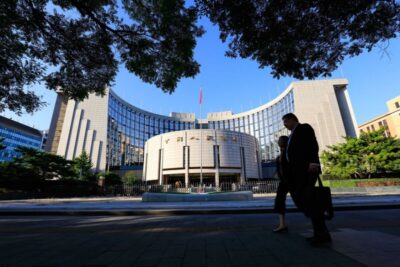>>REAL-TIME UPDATES IN THE WIRE. CLICK HERE<<<
China maintained the benchmark lending rate unchanged in July for the 15th consecutive month, indicating that the central bank continues to keep policy stable despite a recent move to release liquidity to the financial system via a surprise cut in banks’ reserver requirement ratio.
The one-year loan prime rate (LPR) was kept at 3.85 per cent, staying at the same level since April 2020 and the five-year LPR remained unchanged at 4.65 per cent, said the People’s Bank of China (PBOC) on Tuesday.
The LPR is decided by a group of 18 banks and is reported in the form of a spread over the interest rate of the central bank’s medium-term lending facility (MLF).
Analysts say the move suggests Chinese policymakers are currently satisfied with the levels of interbank liquidity and monetary support, especially after the latest data showed the economic recovery is becoming more balanced.
“The move reinforced our view that the RRR cut earlier this month does not signal a change in monetary policy stance,” said Liu Peiqian, an economist at Natwest Group.
“In the second half of this year we expect the central bank to maintain a neutral monetary policy stance and keep benchmark interest rates unchanged as the growth rate slows towards its long-term potential.”
The central bank announced a RRR cut earlier this month, prompting speculation that the authority is likely reversing course and started adding stimulus to support economic growth. The policy move went into effect last week, with around 1 trillion yuan ($154 billion) of additional liquidity available for banks to lend.
The steady fixings for China’s loan prime rates reinforce a view that the PBOC is not keen to resort to aggressive easing. An earlier cut in banks’ RRR triggered speculation that the LPRs might also be lowered, but the PBOC is seen unlikely to guide them lower, considering the solid state of the recovery.
“Today’s LPR is a bit disappointing to the market,” said Xing Zhaopeng, senior China strategist at Australia and New Zealand Banking Group in Shanghai. “The authorities will focus on aggregate funding cost reduction in the second half of the year. We believe more easing measures will be seen later, including green MLF and green relending.”
“If the PBOC lowers the benchmark lending rate after the latest RRR cut, it would send a strong message to the market that the authority is eager to resort to more stimulus which could lead to negative expectation, ” said Pacific Securities in a note.
The central bank may have room to cut the RRR further this year, according to analysts cited in a front-page article in the China Securities Journal. Such a move would be mainly aimed at offsetting liquidity demand rather than easing policies, they said.
China’s short-term interbank funding costs climbed for a second day Tuesday after the interest-rate decision. If interbank liquidity spikes as it did in January, the PBOC could step in to push it back down through one of its policy tools such as open market operations, another RRR cut or medium-term loans.
There are trillions of yuan in such loans expiring between now and the end of the year, as the one-year loans the PBOC made last year to support the economy through the pandemic mature.
Depending on the market liquidity conditions, the PBOC can roll over some or all of these loans, or let them expire, which could reduce the amount of money in the interbank market.
Banks may need extra funds in the second half of this year if they are to purchase the government bonds expected to hit the market during that period. The sale of government debt in the first half of 2021 was slower than last year, and that pace will need to pick up if the government is to sell all the 4.5 trillion yuan in government debt in the annual plan.
China’s top leadership should give some indication of their economic plans sometime this month. The Politburo usually meets in July to assess the economy in the first half of the year and plan for the second half.
“The steady LPR can contain market expectations on further easing for now,” according to Zhou Hao, senior emerging markets Economist at Commerzbank AG.
“China’s monetary policy remains stable, and the possibility of large scale easing in the second half of the year is still very low.”

